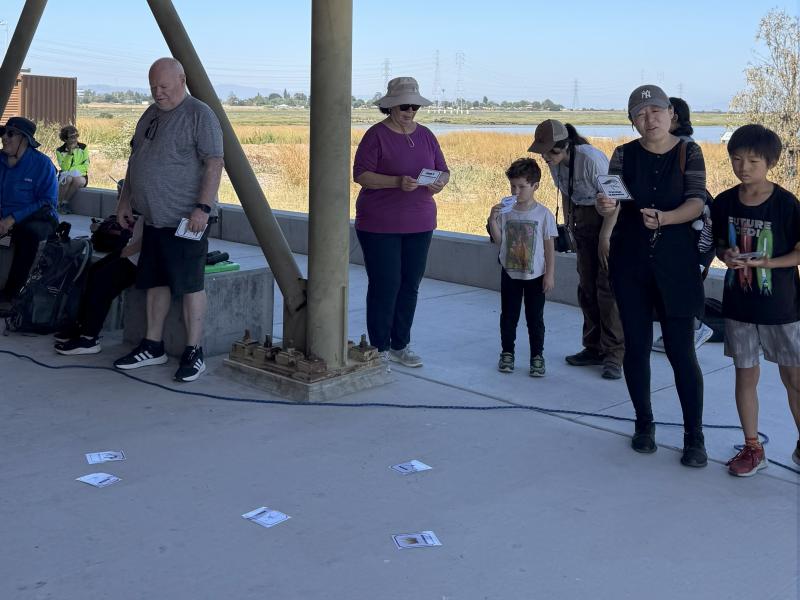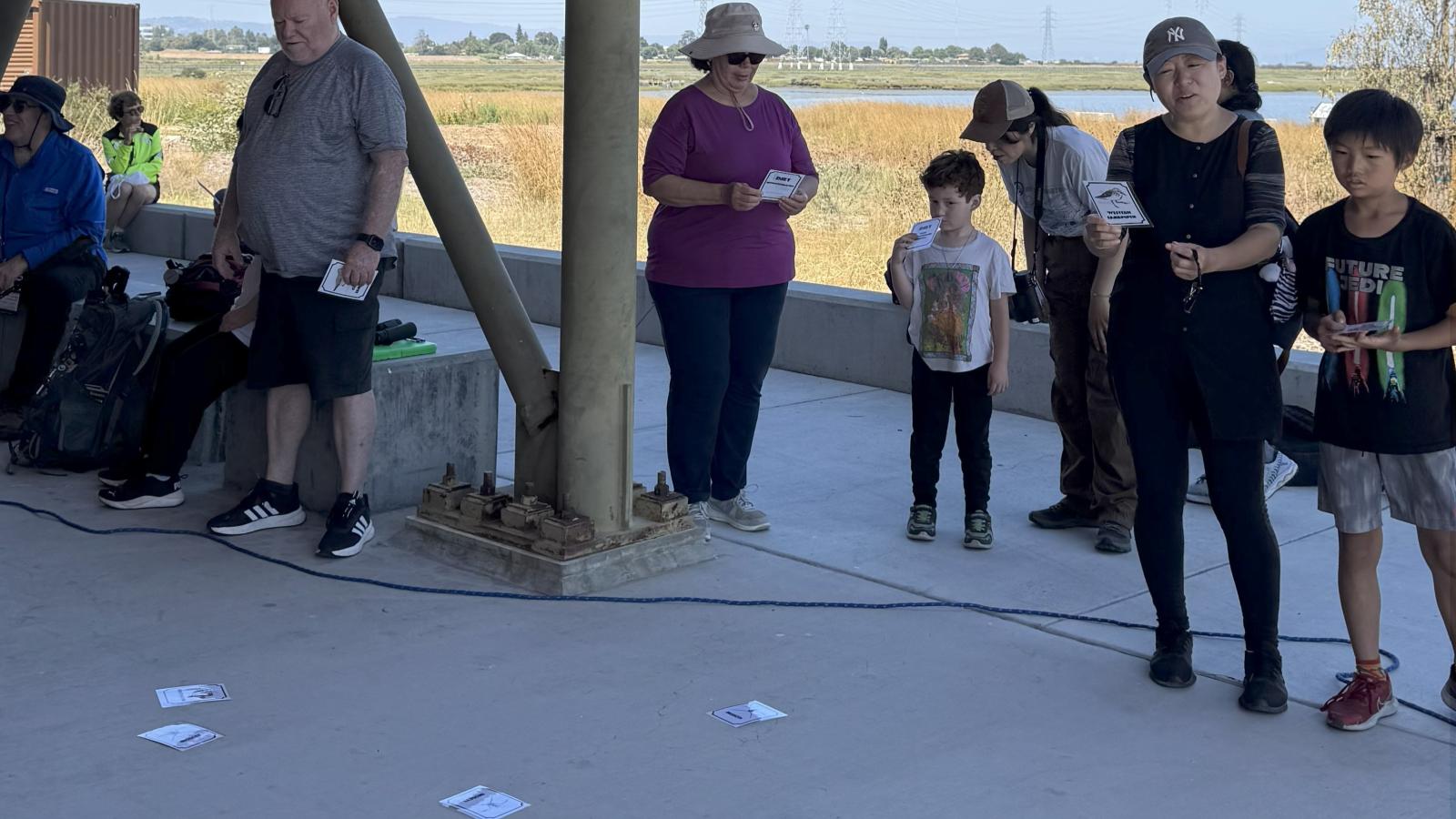Wetland Ecology with Saved By Nature
Published October 2, 2025
New ways of connecting with nature are emerging, one where art, play, and environmental conservation converge to create lasting connections between people and place. Led by Midpen partner Saved By Nature, a nonprofit founded by environmentalist Richard Tejeda in 2018, a recent event at Ravenswood Open Space Preserve was more than a hike, it was a celebration of community, creativity and ecological awareness.
Eva Goldsberry, Saved by Nature’s Interpretive Programs Assistant and UC Santa Barbara art graduate brought a unique lens to the wetlands through a fast-paced game for the hike attendees. At the heart of the game there were 20 hand-drawn illustrations of native bird species found at Ravenswood, each lovingly rendered to reflect the unique features and personalities of birds like the snowy egret, northern harrier, and Ridgway’s rail. These illustrations weren’t just beautiful, they were functional game pieces, each representing a real species that depends on the preserve’s habitat for survival.

“Games are a playful way to connect with a place and learn about native species. They engage both body and mind, helping us remember through imagination and embodied experience. Hand-drawn illustrations add a personal, creative touch that makes the learning even more fun.”
Participants each received a bird card, which included the name and image of their assigned species. In the center of the playing area lay a scattered pile of “food cards” representing the diverse diets of these birds: fish, insects, seeds, crustaceans, and more. With the start of a timer, players had just 10 seconds to scan the pile and grab the correct food card that matched their bird’s diet. Those who failed to secure a match were “out”, symbolizing the real-world consequences of habitat disruption and food scarcity. This fast-paced round mimicked the urgency and competition birds face in the wild, especially in shrinking habitats where resources are limited.
As the game progressed, more external stressors were introduced, like climate change and urban development. These pressures were represented physically in the game by shrinking the circle, forcing remaining players into tighter quarters. With each round, more birds were eliminated, not just because they failed to find food, but because their habitat could no longer support them. This visual and physical metaphor powerfully conveyed how environmental degradation disproportionately affects certain species, especially those with specialized needs or limited ranges. Participants were encouraged to observe which birds were forced out first and reflect on why, sparking conversations about species vulnerability, ecological niches, and the cascading effects of habitat loss.
In the final phase of the game, restoration efforts were introduced. This moment marked a shift from loss to hope. Two symbolic species the Ridgway’s rail and the salt marsh harvest mouse, both federally listed and emblematic of the Bay’s sensitive marshlands, were brought back in by the surviving players. This act of restoration wasn’t just a game mechanic, it is a celebration of real-world conservation work. It highlights how thoughtful stewardship, habitat restoration, and community engagement can reverse ecological decline and support the return of endangered species.
“There’s so much thoughtful planning that happens behind the scenes of every event or location,” said Saved by Nature Founder Richard Tejeda, “The real magic is in finding ways to help people connect through touch, taste, and smell so they don’t just visit a place, they build a lasting affinity for it.”
Through movement, competition, and collaboration, participants experienced firsthand the challenges birds face in a changing world. They left not only with a deeper understanding of Ravenswood’s ecological significance, but also with a sense of agency and connection to the ongoing work of protecting and restoring these vital habitats.
“These hikes are more than just scenic walks,” said Tejeda, “They’re gateways to environmental awareness and stewardship. With support from Midpen and others, these hikes become powerful tools for environmental stewardship. Without funding, they disappear and so does the chance to connect people meaningfully to nature.”
Saved By Nature’s mission is simple yet powerful: to inspire people of all backgrounds, ethnicities, and abilities to connect with the outdoors through transformative environmental education. Whether on Midpen lands or beyond, their programs open doors to nature, equity, and community. To learn more about their work and to join an upcoming event that might just change the way you see the world, visit savedbynature.org.

